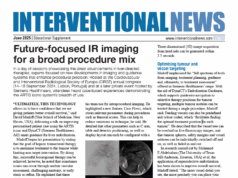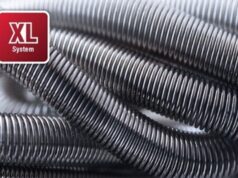![]() Embolization has announced that it has received 510(k) clearance from the US Food and Drug Administration (FDA). The Nitinol Enhanced Device (NED) is a vascular embolization device intended for arterial and venous embolization in peripheral vasculature.
Embolization has announced that it has received 510(k) clearance from the US Food and Drug Administration (FDA). The Nitinol Enhanced Device (NED) is a vascular embolization device intended for arterial and venous embolization in peripheral vasculature.
Vascular embolization is a minimally invasive procedure where a physician intentionally blocks a blood vessel using tiny materials such as coils, particles or glue. This stops bleeding, reduces blood flow to tumours, or prevents damage from abnormal blood vessels, and is often used instead of surgery because it’s safer, quicker to recover from and very precise.
Using proprietary shape-memory biocompatible polymers, Embolization’s coil devices achieve better vascular occlusion while minimising artifacts in computed tomography (CT) and magnetic resonance imaging (MRI) that occur with traditional metal devices.
Embolization’s development represents the next generation in embolic coils, says Jim Kasic, Embolization chief executive officer. “The 510(k) clearance—which gives the company the ability to market the device—is a defining moment and major step forward in bringing this important device to the medical community, and ultimately, to the patients who will benefit.”
Kasic notes that the NED will be the only polymer-based coil on the market; all other available coils are metal-based. “Our pre-clinical work has shown that the coils have substantially reduced imaging artifact, significantly outperforming competitive devices,” he says. The coils, he adds, are still radiopaque under fluoroscopy even though the CT/MRI imaging artifact is minimal.
Studies also show shorter occlusion times and tighter coil packs. “With fewer devices per procedure, lower recanalisation rates and lower manufacturing costs, I believe the Embolization coil will substantially replace existing metal options,” states Kasic.
Further detailing use of the NED, Kasic explains that peripheral vasculature conditions such as great saphenous insufficiency, renal aneurysm and other vessel anomalies require blocking the flow in the vein, artery or aneurysm to prevent further damage, and to promote alternative flow pathways and healing. Interventional radiologists use surgical ligation when open surgery is indicated, but minimally invasive insertion of a coil into the vasculature has become a common approach to avoid open surgery.











